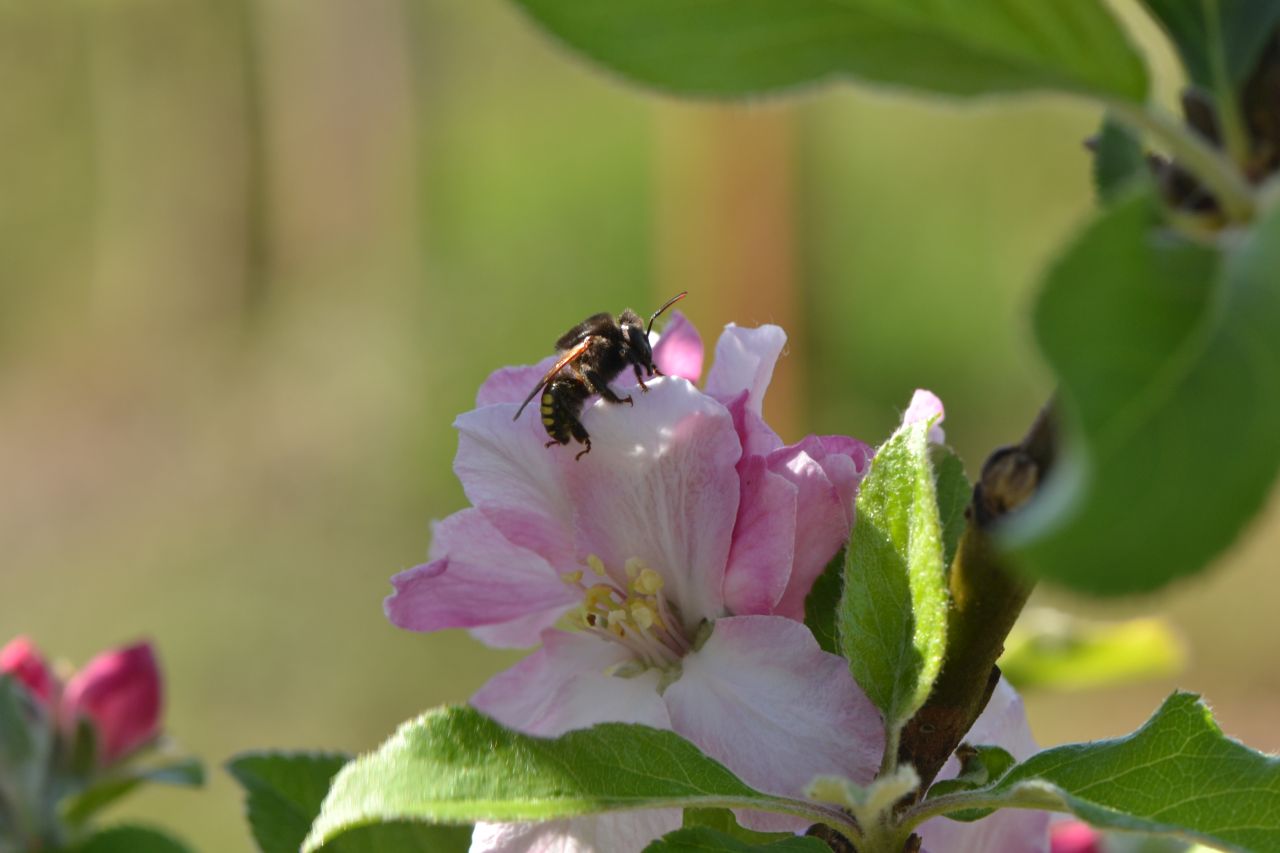Stingless bees further improve apple pollination and production
DOI:
https://doi.org/10.26786/1920-7603(2014)26Abstract
The use of Africanised honeybee (Apis mellifera scutellata Lepeletier) hives to increase pollination success in apple orchards is a widespread practice. However, this study is the first to investigate the number of honeybee hives ha-1 required to increase the production of fruits and seeds as well as the potential contribution of the stingless bee Mandaçaia (Melipona quadrifasciata anthidioides Lepeletier). We performed tests in a 43-ha apple orchard located in the municipality of Ibicoara (13º24’50.7’’S and 41º17’7.4’’W) in Chapada Diamantina, State of Bahia, Brazil. In 2011, fruits from the Eva variety set six seeds on average, and neither a greater number of hives (from 7 to 11 hives ha-1) nor a greater number of pollen collectors at the honeybee hives displayed general effects on the seed number. Without wild pollinators, seven Africanised honeybee hives ha-1 with pollen collectors is currently the best option for apple producers because no further increase in the seed number was observed with higher hive densities. In 2012, supplementation with both stingless bees (12 hives ha-1) and Africanised honeybees (7 hives ha-1) provided higher seed and fruit production than supplementation with honeybees (7 hives ha-1) alone. Therefore, the stingless bee can improve the performance of honeybee as a pollinator of apple flowers, since the presence of both of these bees results in increases in apple fruit and seed number.

Downloads
Published
How to Cite
Issue
Section
License
Copyright (c) 2014 Blandina Felipe Viana, Jeferson Gabriel da Encarnação Coutinho, Lucas Alejandro Garibaldi, Guido Laercio Bragança Castagnino, Kátia Peres Gramacho, Fabiana Oliveira Silva

This work is licensed under a Creative Commons Attribution 4.0 International License.
JPE is an open access journal which means that all content is freely available without charge to the user or his/her institution.
Authors who publish with this journal agree to the following terms:
1) Authors retain copyright and grant the journal right of first publication with the work simultaneously licensed under a Creative Commons Attribution License that allows others to share the work with an acknowledgement of the work's authorship and initial publication in this journal.
2) Authors are able to enter into separate, additional contractual arrangements for the non-exclusive distribution of the journal's published version of the work (e.g., post it to an institutional repository or publish it in a book), with an acknowledgement of its initial publication in this journal.
3) Authors are permitted and encouraged to post their work online (e.g., in institutional repositories or on their website) prior to and during the submission process, as it can lead to productive exchanges, as well as earlier and greater citation of published work (See The Effect of Open Access).
To assure a broader targeted audience, content will be included into databases (such as EBSCO) and directories (such as DOAJ).











